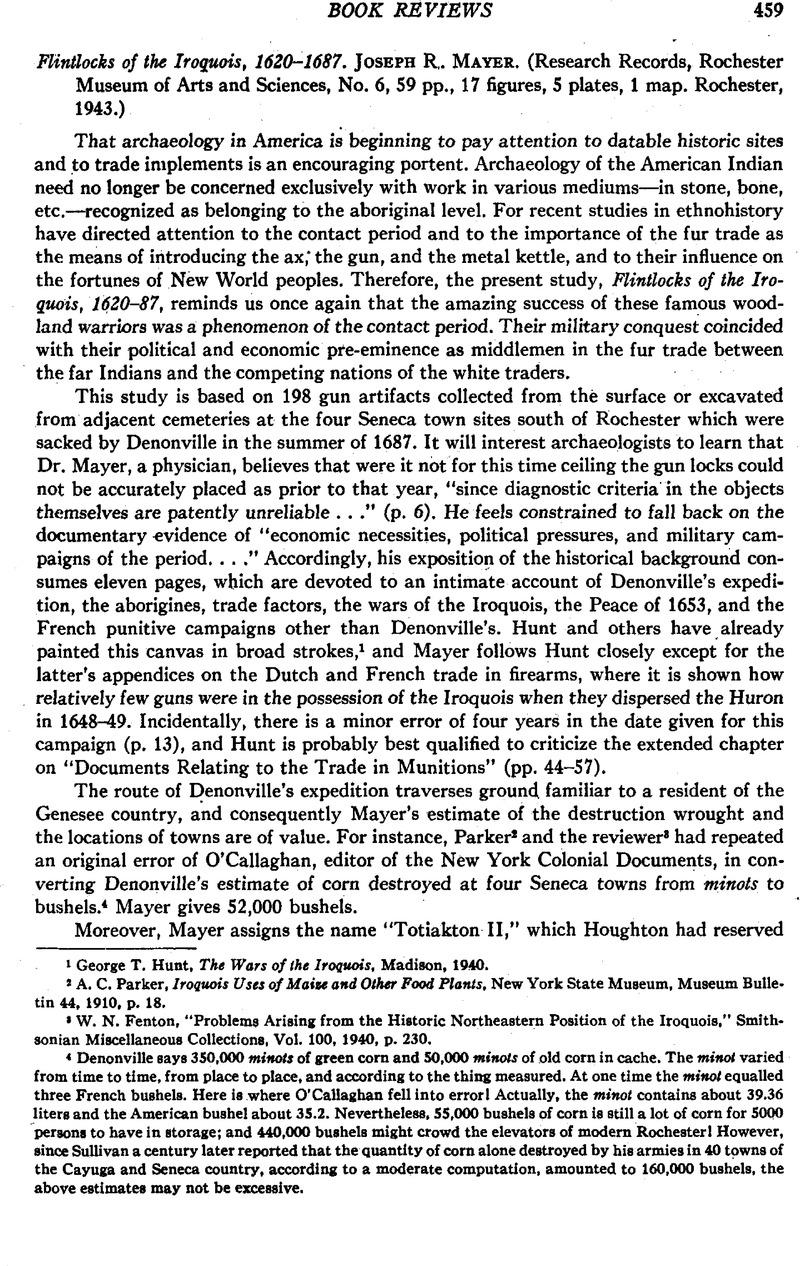No CrossRef data available.
Article contents
Flintlocks of the Iroquois, 1620-1687. Joseph R. Mayer. (Research Records, Rochester Museum of Arts and Sciences, No. 6, 59 pp., 17 figures, 5 plates, 1 map. Rochester, 1943.)
Published online by Cambridge University Press: 25 January 2017
Abstract

- Type
- Book Reviews
- Information
- Copyright
- Copyright © The Society for American Archaeology 1944
References
1 George T. Hunt, The Wars of Ike Iroquois, Madison, 1940.
2 A. C. Parker, Iroquois Uses of Maize and Other Food Plants, New York State Museum, Museum Bulletin 44, 1910, p. 18.
3 W. N. Fenton, “Problems Arising from the Historic Northeastern Position of the Iroquois,” Smithsonian Miscellaneous Collections, Vol. 100, 1940, p. 230.
4 Denonville says 350,000 minots of green corn and 50,000 minots of old corn in cache. The minot varied from time to time, from place to place, and according to the thing measured. At one time the minot equalled three French bushels. Here is where O'Callaghan fell into errorl Actually, the minot contains about 39.36 liters and the American bushel about 35.2. Nevertheless, 55,000 bushels of corn is still a lot of corn for 5000 persons to have in storage; and 440,000 bushels might crowd the elevators of modern Rochester I However, since Sullivan a century later reported that the quantity of corn alone destroyed by his armies in 40 towns of the Cayuga and Seneca country, according to a moderate computation, amounted to 160,000 bushels, the above estimates may not be excessive.




